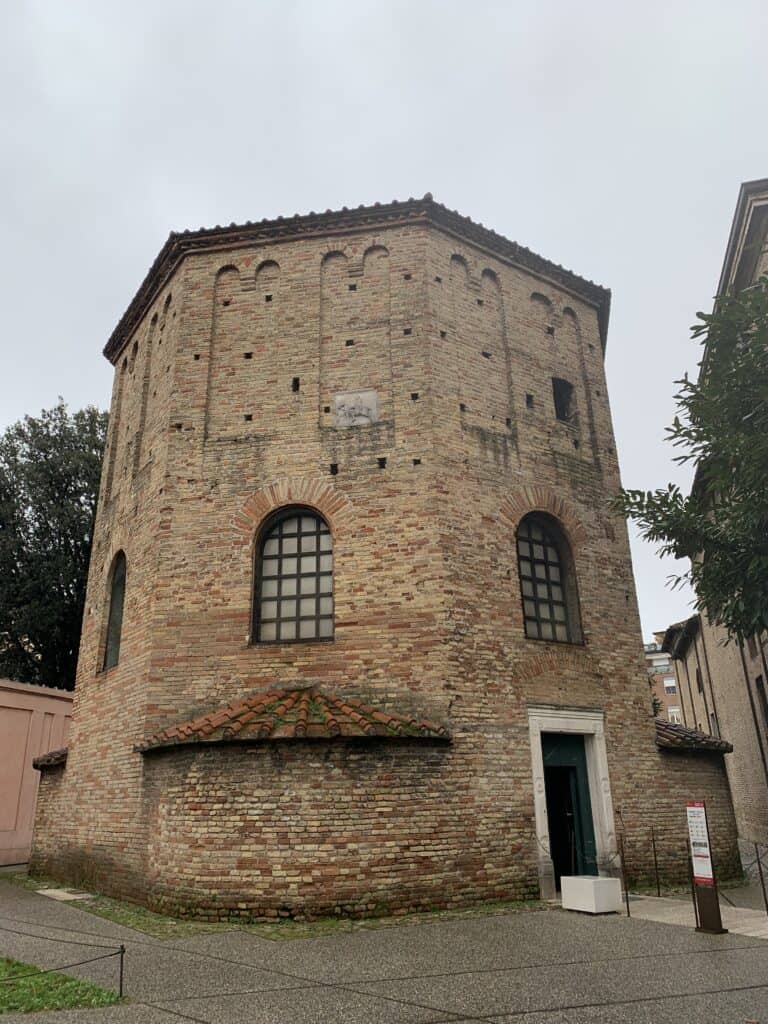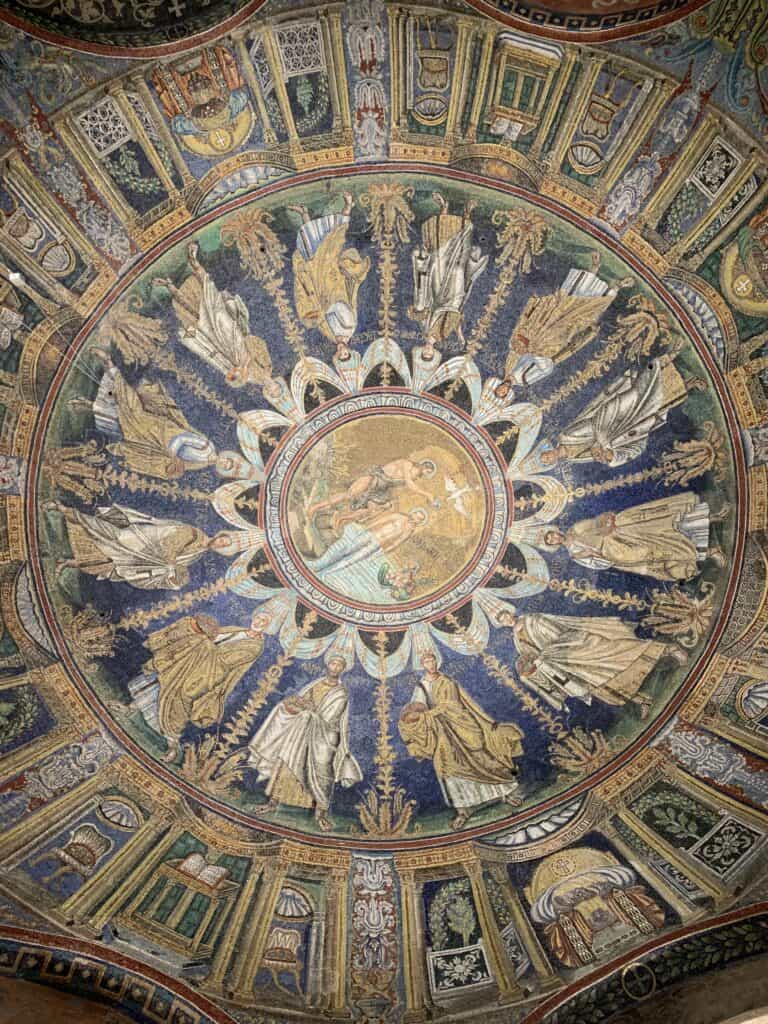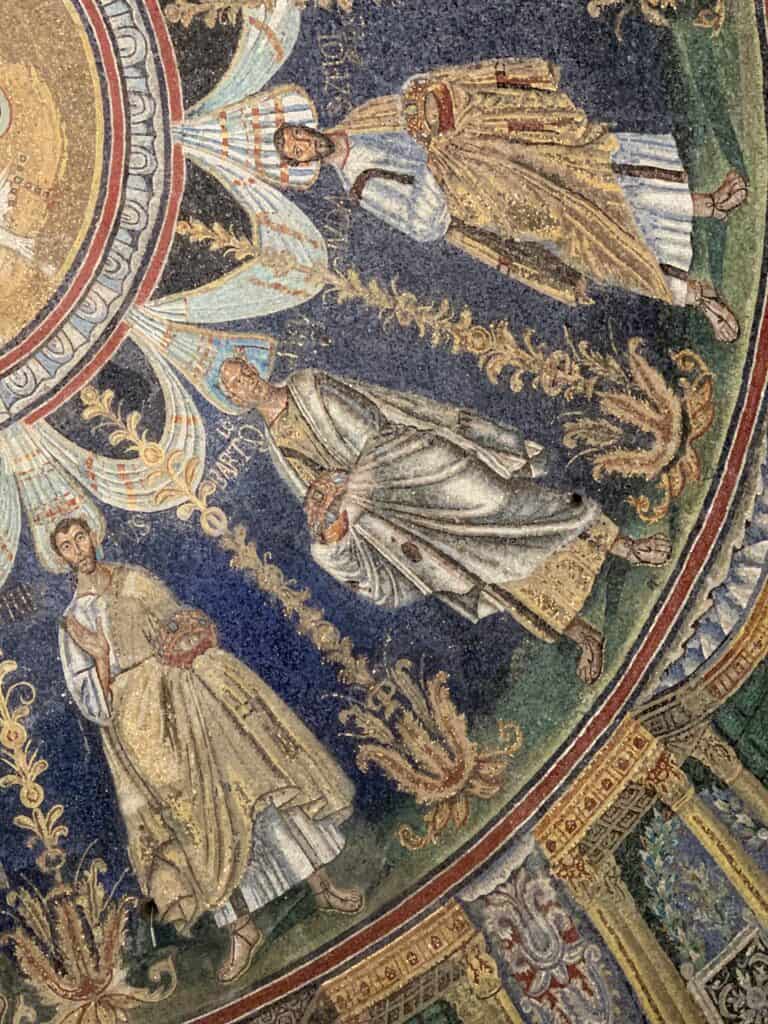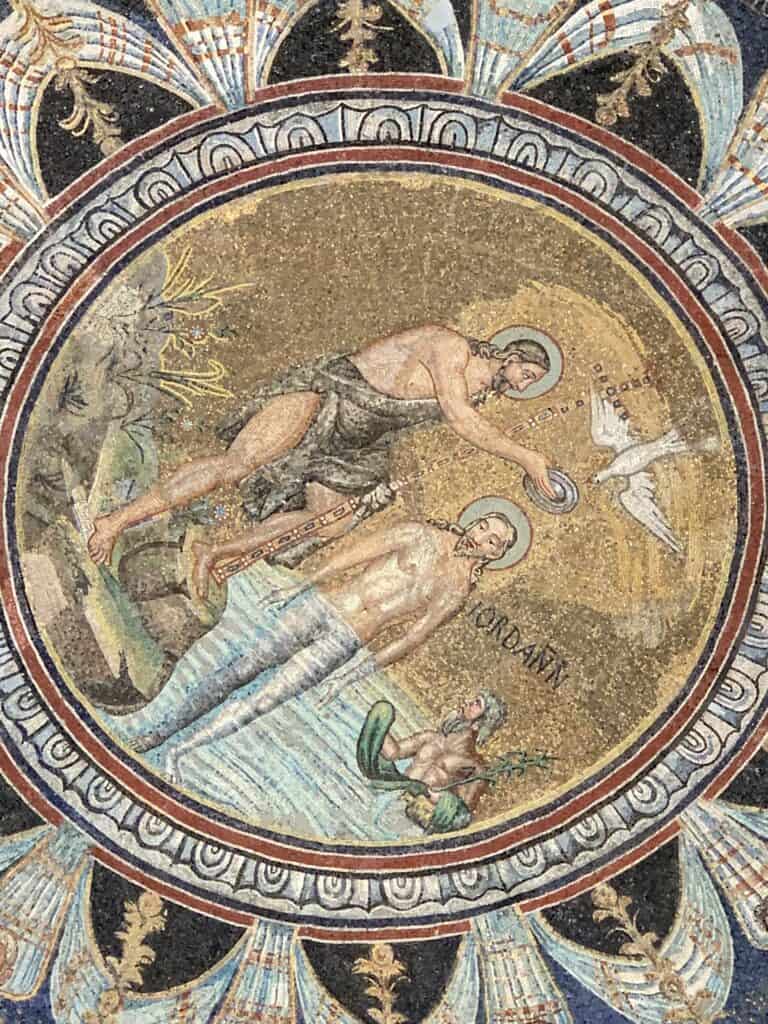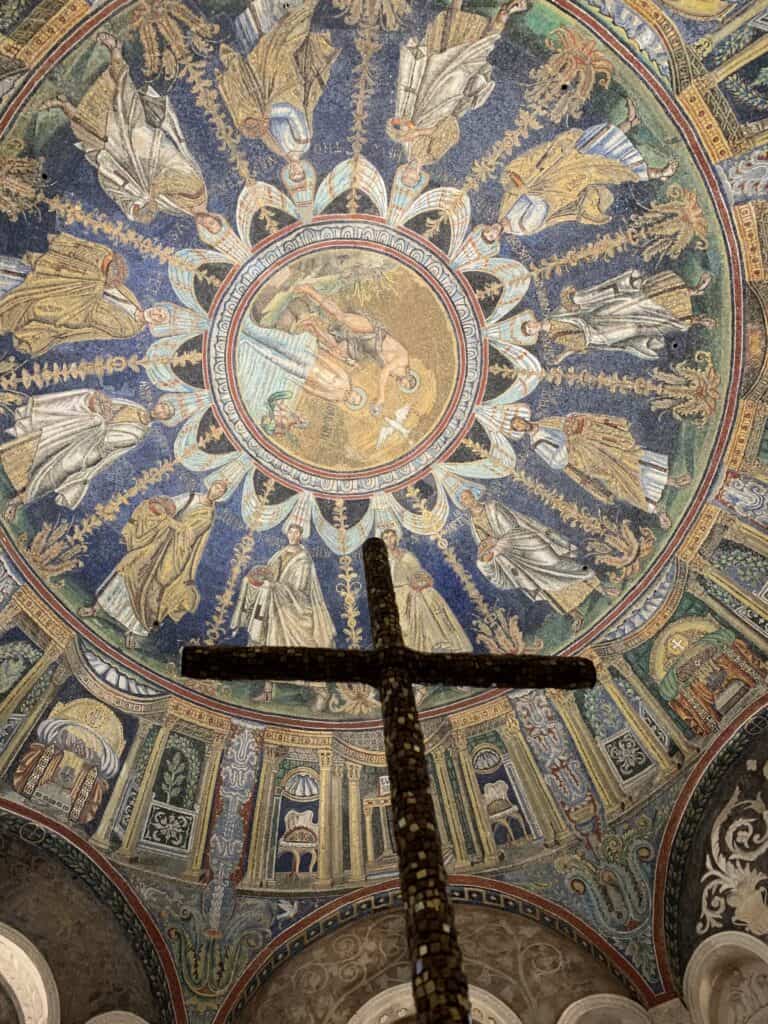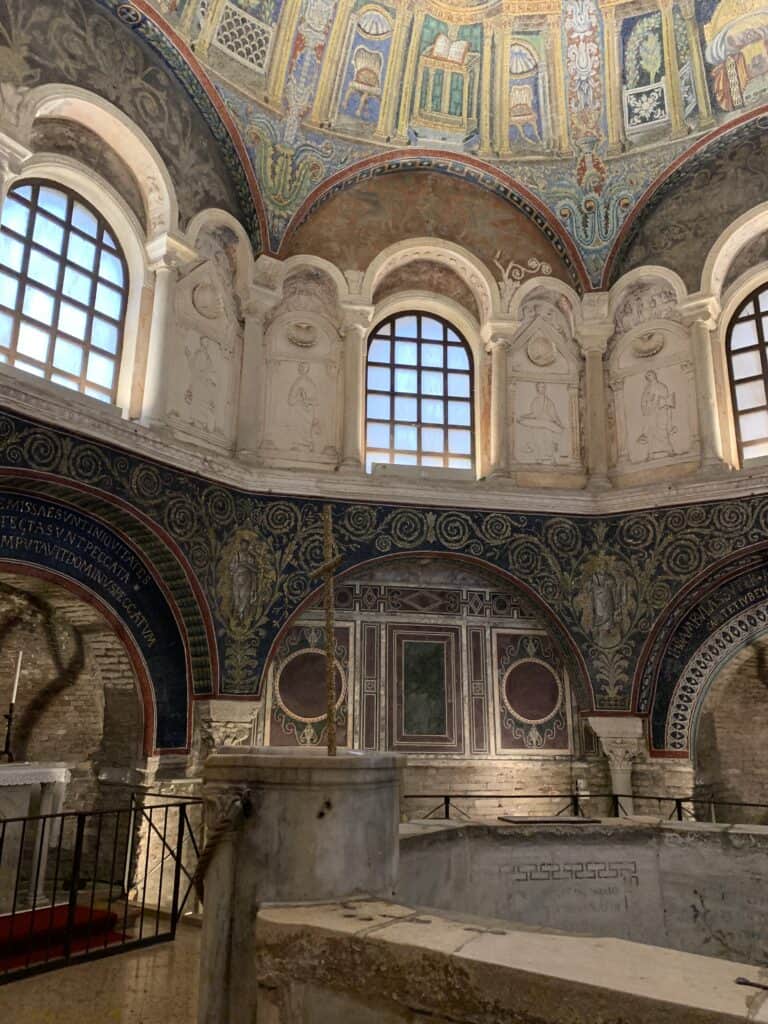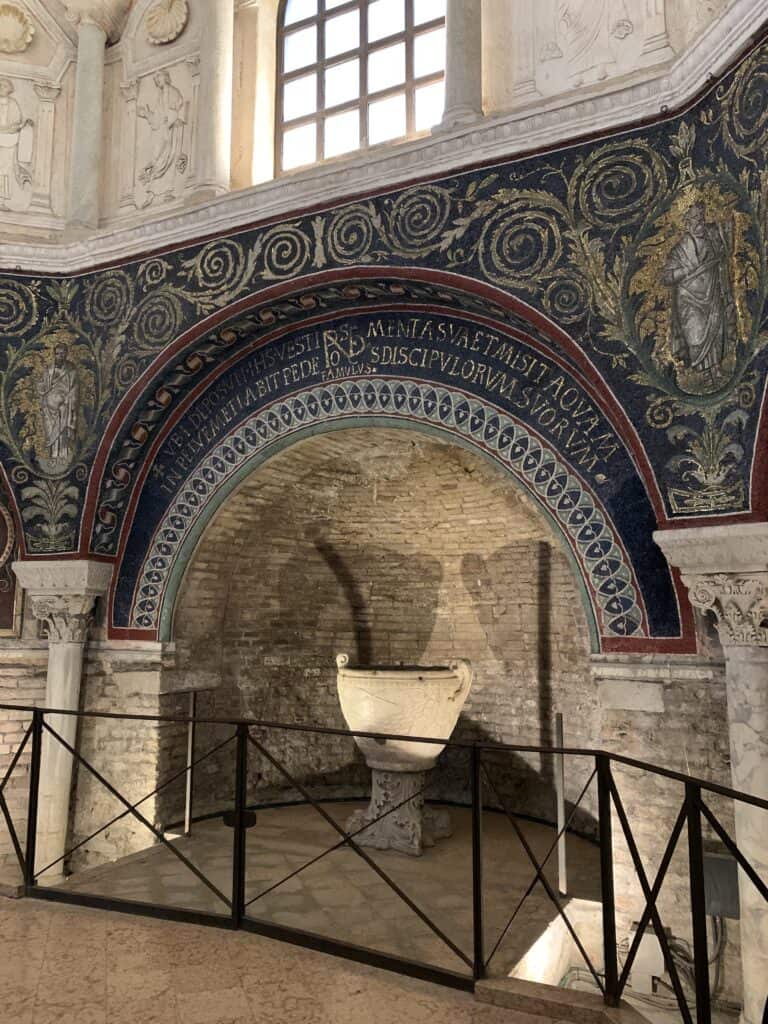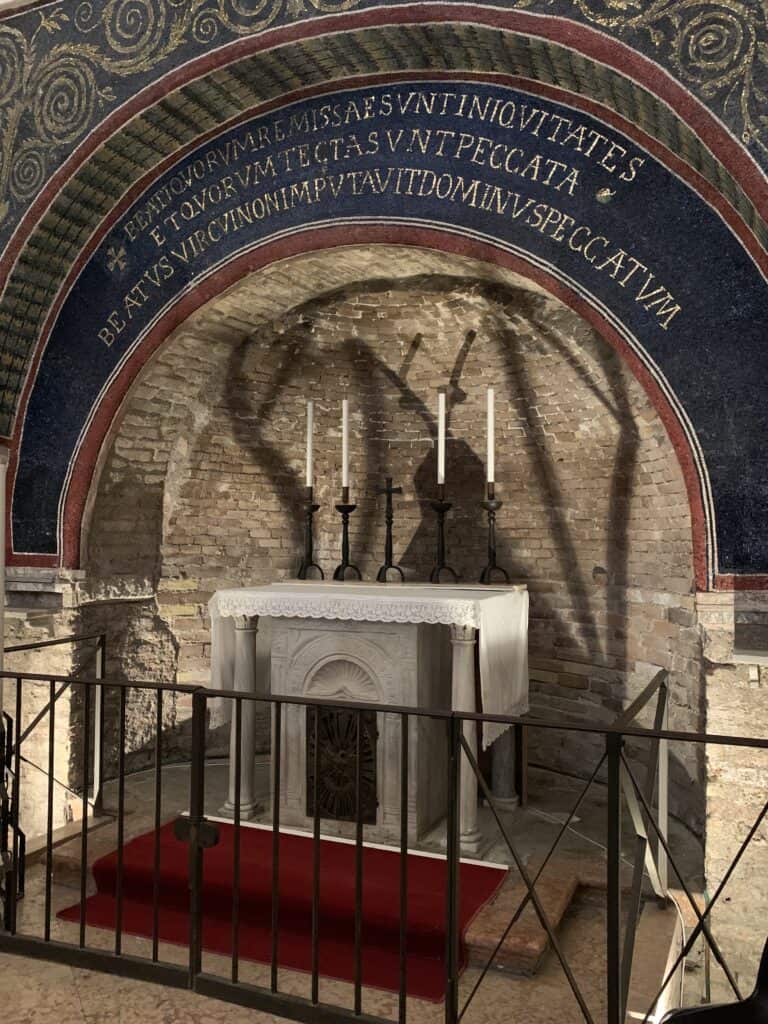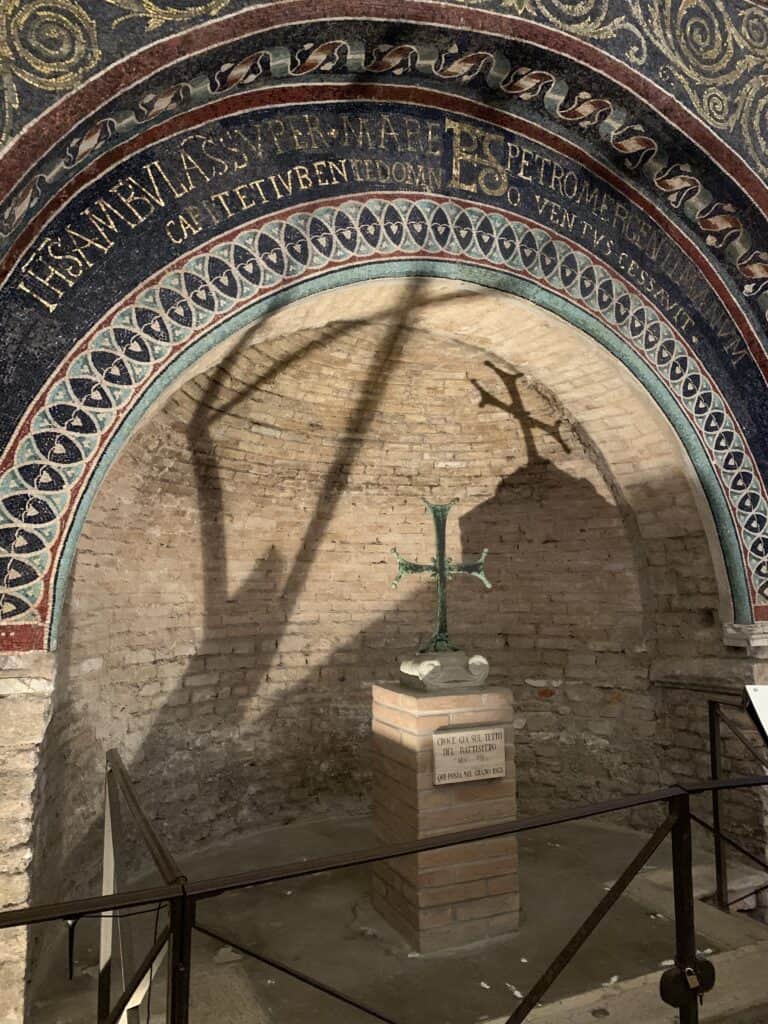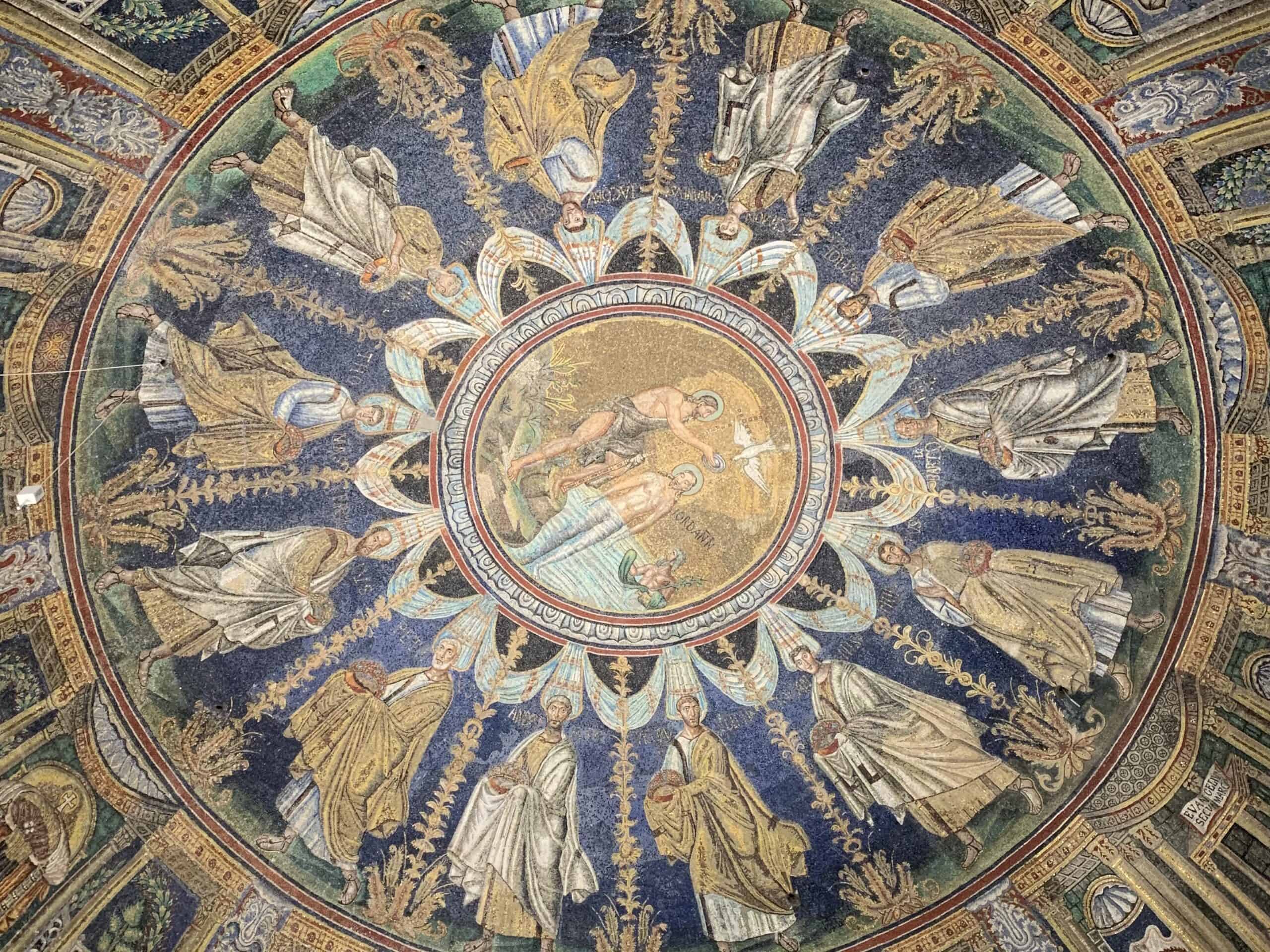
The Neoniano Baptistery was built in the fifth century, also called “of the Orthodox” because it was built in order to host the rituals of Orthodox faith.
The name “Neoniano” takes the name of the Bishop of Ravenna Neone who allowed its construction.
Baptistery was built in the period in which Ravenna became the capital of the Western Roman Empire.
It was built with an octagonal shape, which unites it to the Arian Baptistery, since numerology sees the number 8 as the number of the Resurrection.
The ceiling of the dome, decorated with mosaics in three concentric rings, each representing a well-defined subject. Outer ring has tripartite architectures on a blue background, the middle one instead the twelve apostles holding crowns to offer to Christ and interspersed with candelabras.
The third register, the central one, represents the scene of the Baptism of Christ on a gold background.
As a further decoration in the Neoniano Baptistery are the stuccoes of the sixteen prophets (reconstructions, since the originals were mistakenly destroyed during a restoration in the twentieth century) and frescoes with various subjects.
The Neonian Baptistery was included in the list of Italian World Heritage Sites by UNESCO in 1996.
I thank the Opera Religion of the Diocese of Ravenna for its hospitality and availability.

